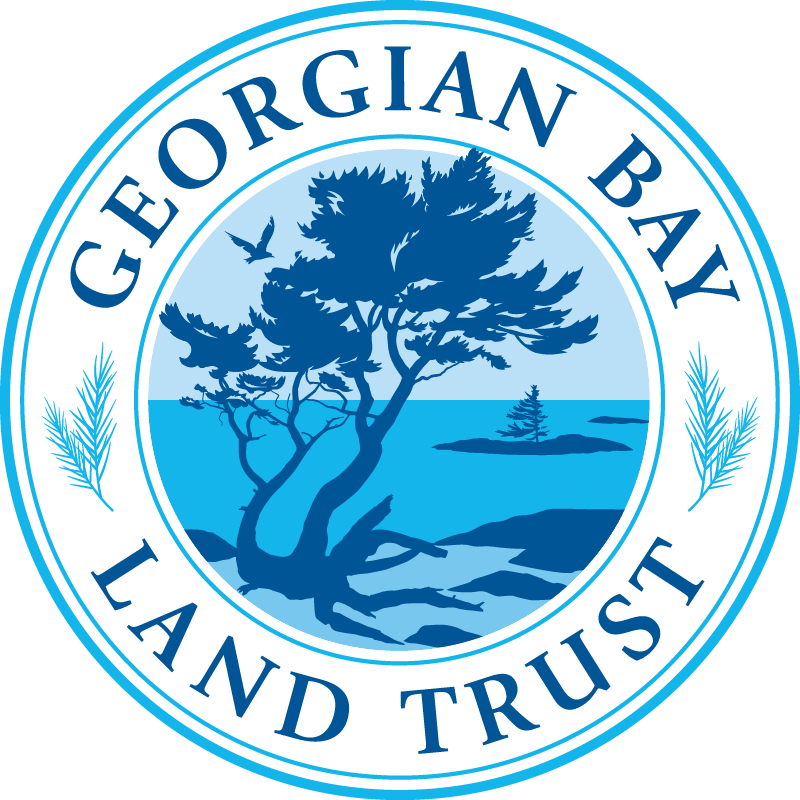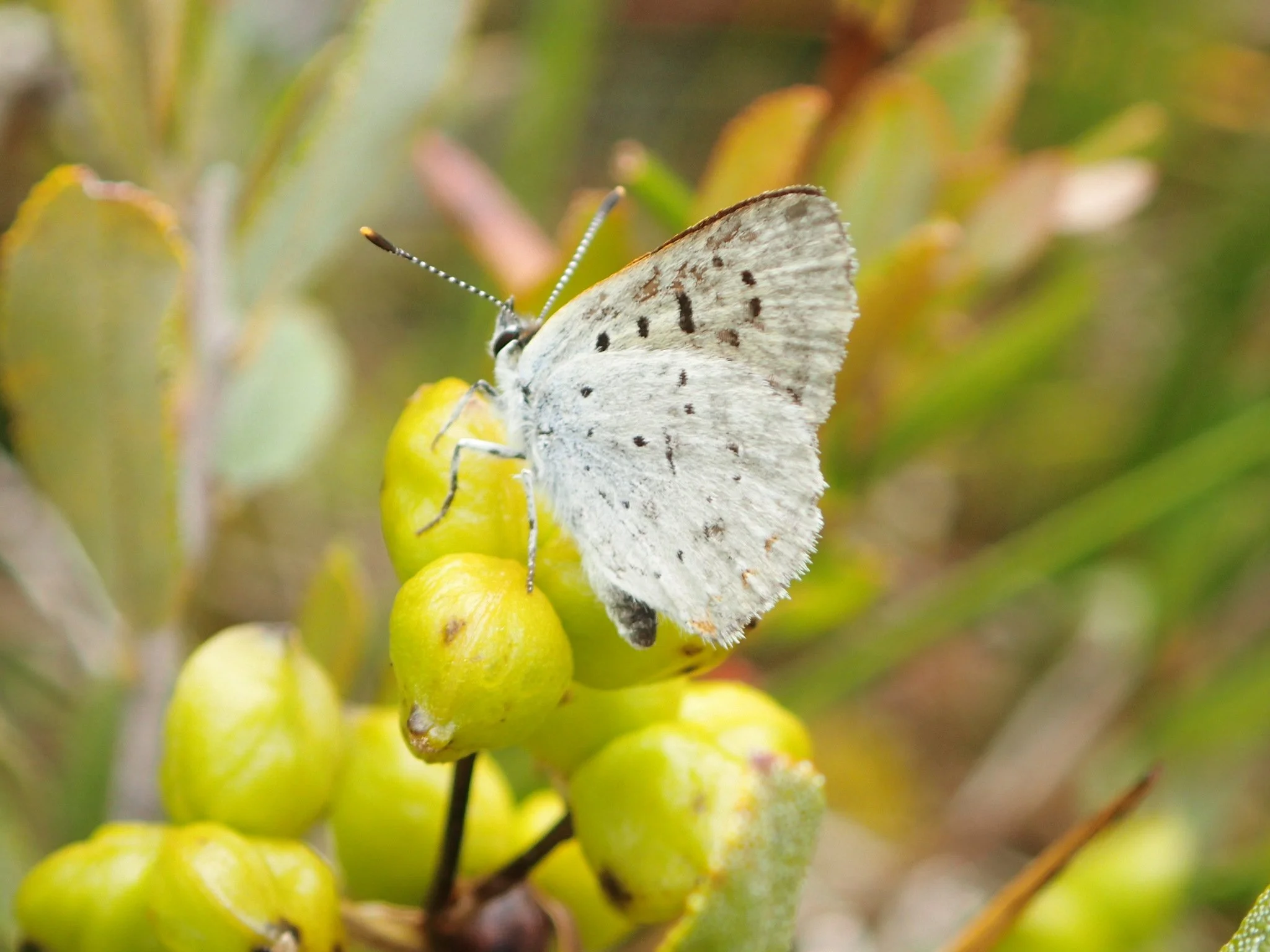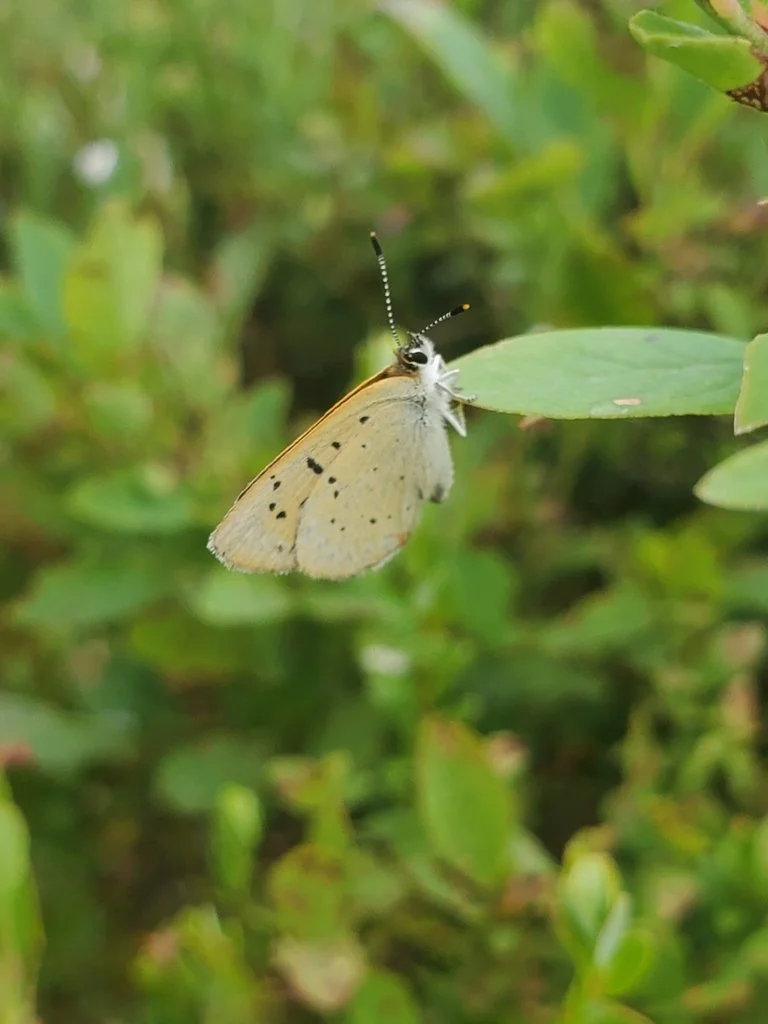The Bog Copper Butterfly
Photo by Tom Murray
The next time you find yourself near cranberry plants on Georgian Bay, have a look for a pale, low-flying butterfly. It just might be a Bog Copper!
Bog Coppers are small, delicate butterflies that are highly specific in their habitat needs. They can spend their entire lives in the vicinity of a single patch of cranberry plants, which they use for food, nectar, and shelter for their eggs.
These are the smallest members of the copper family in North America, with a wingspan of just 2-2.5 cm. Their name is a reflection of the fact that cranberries are most often found in bogs, but it is the cranberry itself that is most important to this species, not the bog. Bog Coppers have been found alongside cranberry plants in a variety of habitats, including fens, wet meadows, and depressions on Georgian Bay islands (more on that below).
Bog Coppers are less orange than other members of the copper family, and tend to have a purplish sheen and black dots on their wings. One of the best ways to distinguish them from similar species is simply to look at the habitat you’ve found them in. If there are cranberries present, it’s likely a Bog Copper.
Photo by Allan Harris
Bog Coppers are usually observed fluttering low around cranberry plants, and they frequently alight to drink nectar from the plant’s flowers, and dewdrops from the leaves. The female lays her eggs on the underside of cranberry leaves, where they will remain through the summer, fall, and winter before emerging in the spring. These eggs are tough, and can withstand flooding and winters spent frozen under ice. When spring arrives, out come chunky green caterpillars covered in tiny white hairs. They’ll spend some time feeding on cranberry leaves before disappearing into chrysalises to become butterflies.
Bog Coppers exist in a variety of locations throughout the Great Lakes region, eastern Canada, and the north-eastern United States, and are not under any significant conservation threat as a whole. However, because of their localized nature and highly specific needs, individual populations are very vulnerable to wetland draining or destruction. Yet another reason to protect wetlands – you never know what beautiful little creatures may depend on them being there!
The Research Project: Unravelling a Georgian Bay Mystery
Given how little Bog Coppers travel, it’s very interesting that we find them in cranberry patches on Georgian Bay’s isolated outer islands. How did they get here, and how long ago?
This summer, the Georgian Bay Land Trust will be attempting to answer parts of that question in partnership with Western University. MSc candidate Madison Robinson will be taking DNA samples from mainland and island populations of Bog Coppers, and comparing them to see whether the island populations are genetically distinct. Here’s how Madison summarizes her work:
Photo by Aaron Rusak
“My project looks at Bog Copper (Tharsalea epixanthe) populations found on islands in Georgian Bay that do not resemble their typical habitats. Usually, Bog Coppers are found in peatlands containing sphagnum moss and interspersed cranberries, however, these island populations have very densely packed cranberries with small amounts of water. Bog Coppers are poor dispersers, and thus, it is odd that they are found far from their mainland habitats on these islands.
My research focuses on the genetic differentiation between the mainland and island populations of Bog Coppers, using microsatellite markers to determine genetic similarity or difference. I aim to establish whether these populations have diverged from their mainland counterparts, or whether these islands have recently been colonized. If I see little differentiation between the island and mainland populations, that would infer recent colonization and/or gene flow between populations, whereas seeing large differentiation would infer distant colonization and/or little gene flow.”



